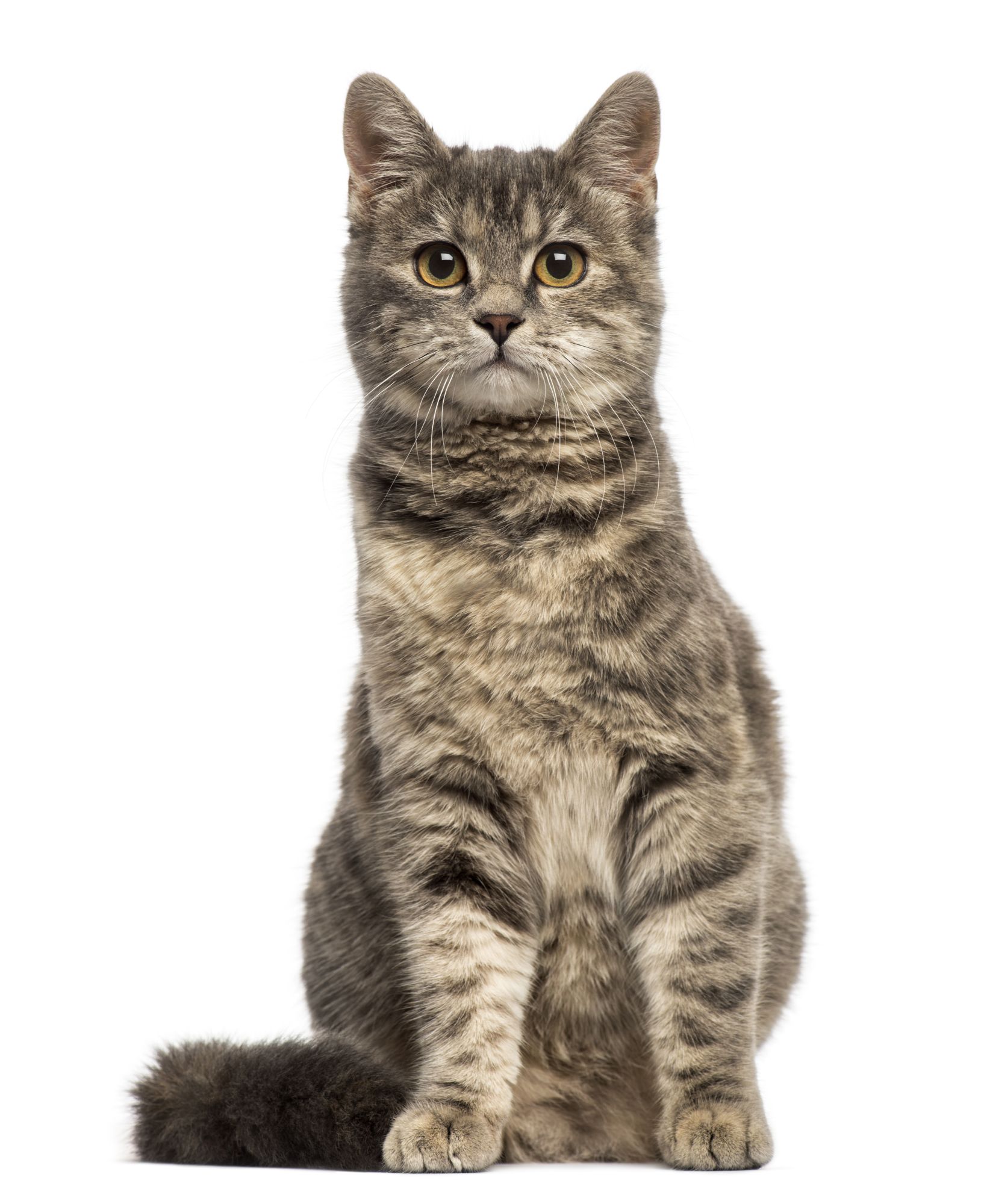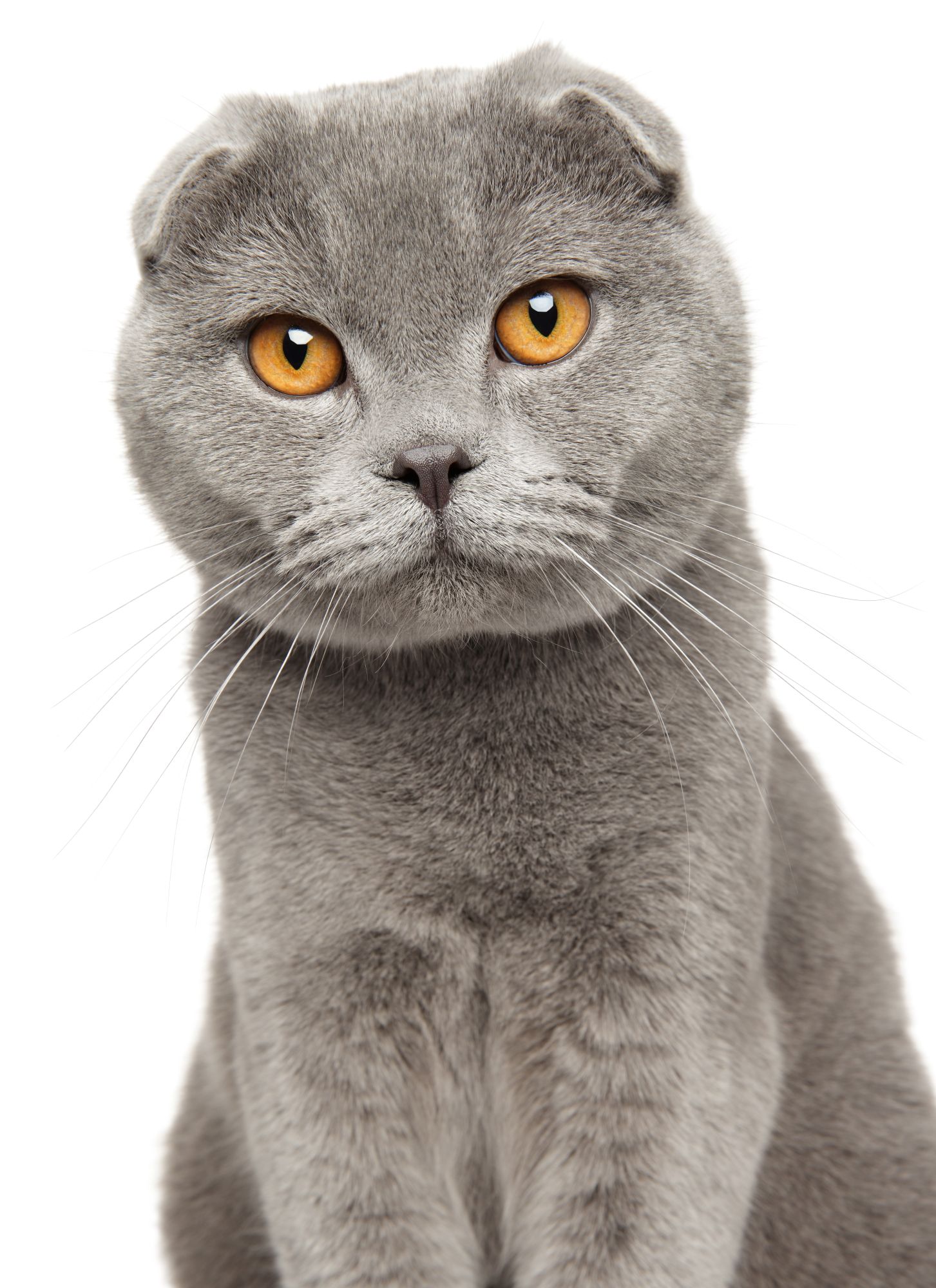British Shorthair

The British Shorthair is the pedigreed version of the traditional British domestic cat, with a distinctively stocky body, dense coat, and broad face. The most familiar colour variant is the "British Blue", with a solid grey-blue coat, orange eyes, and a medium-sized tail. The breed has also been developed in a wide range of other colours and patterns, including tabby and colourpoint.
It is one of the most ancient cat breeds known. In modern times, it remains the most popular pedigreed breed in its native country, as registered by the UK's Governing Council of the Cat Fancy (GCCF). A quarter of all kittens registered with the GCCF each year are British Shorthairs, making the British the most popular pedigree cat in the UK.
The breed's good-natured appearance and relatively calm temperament make it a frequent media star, notably as the inspiration for John Tenniel's famous illustration of the Cheshire Cat from Alice in Wonderland. The Cat Fanciers' Association profile reads: "When gracelessness is observed, the British Shorthair is duly embarrassed, quickly recovering with a 'Cheshire cat smile'."
Norwegian Forest cat

The Norwegian Forest cat (Norwegian: Norsk skogkatt and Norsk skaukatt) is a breed of domestic cat originating in Northern Europe. This natural breed is adapted to a very cold climate, with a top coat of long, glossy, water-shedding hair and a woolly undercoat for insulation. The breed's ancestors may have been a landrace of short-haired cats brought to Norway about A.D. 1000 by the Vikings, who may also have brought with them long-haired cats, like those ancestral to the modern Siberian and Turkish Angora. During World War II, the Norwegian Forest cat was nearly extinct; then the Norwegian Forest Cat Club's breeding program increased the cat's number. It was registered as a breed with the European Fédération Internationale Féline in the 1970s, when a cat fancier, Carl-Fredrik Nordane, took notice of the breed and made efforts to register it. The breed is very popular in Norway, Denmark, Sweden, Iceland, and France.
It is a big, strong cat, similar to the Maine Coon breed, with long legs, a bushy tail, and a sturdy body. It is very good at climbing, partly because of strong claws. The lifespan is usually 14 to 16 years. Kidney and heart diseases have been reported in the breed. Specifically in this breed, complex rearrangements of glycogen branching enzyme (GBE1) can cause a perinatal hypoglycaemic collapse and a late-juvenile-onset neuromuscular degeneration in glycogen storage disease type IV.
European Shorthair

The European Shorthair, called the European in FIFe and WCF is a cat breed originating in Sweden. The term has also been used as an elaborate way of referring to common domestic cats of Europe, causing some confusion as the pedigree cats of this breed also should resemble the typical domestic cats of Europe. In WCF a similar breed is known as Celtic Shorthair and was at a time considered the same breed, but this breed has some difference from the Europeans, and the WCF now register true Europeans under this breed name instead of under Celtic Shorthair.
The role as the cat breed resembling the original domestic cats of Europe was held until the beginning of the 20th century by the British Shorthair, even though stockier than the majority of common European cats, until 1949 when the European Shorthair was recognized by the Fédération internationale féline (FIFe). The oldest known European Shorthair registered in FIFe was born in 1940, as the origin of the European Shorthair predates the formation of FIFe in 1949.
Scottish Fold

The Scottish Fold is a breed of domestic cat with a natural dominant gene mutation that affects cartilage throughout the body, causing the ears to "fold", bending forward and down towards the front of the head, which gives the cat what is often described as an "owl-like" appearance.
Originally called lop-eared or lops after the lop-eared rabbit, Scottish Fold became the breed's name in 1966. Depending on registries, longhaired Scottish Folds are varyingly known as Highland Fold, Scottish Fold Longhair, Longhair Fold and Coupari.

Visibility & Sequencing rules
This component is now visible, because learner selected the corresponding region in the quesionnaire.
This article uses material from the Wikipedia articles British Shorthair, Norwegian Forest cat, European Shorthair and Scottish Fold which are released under the Creative Commons Attribution-Share-Alike License 3.0 (https://creativecommons.org/licenses/by-sa/3.0/).
